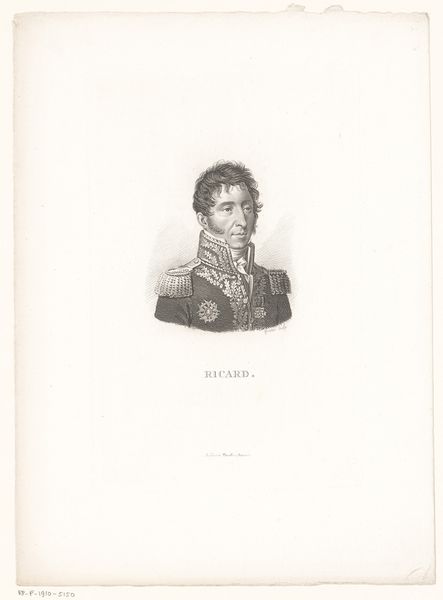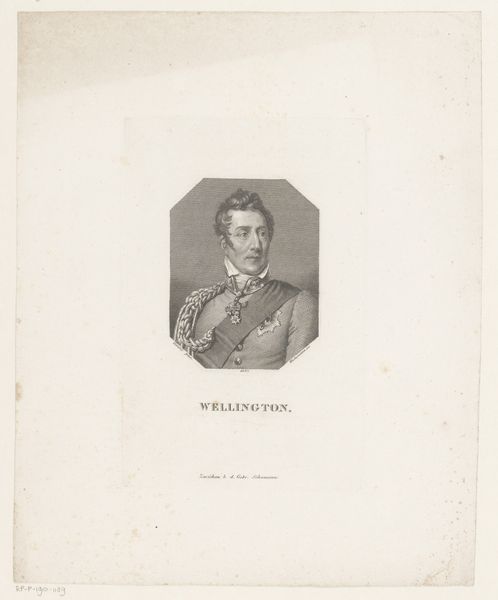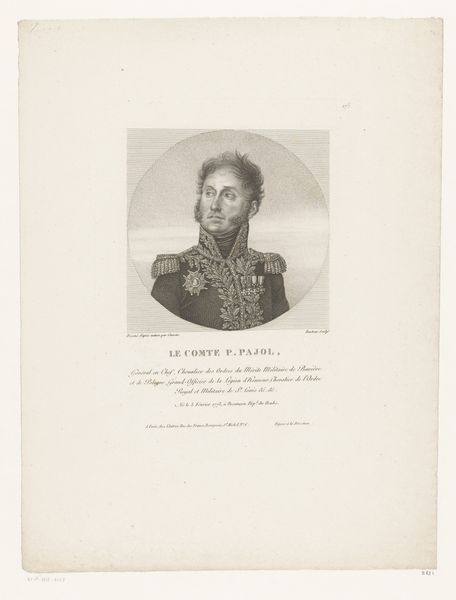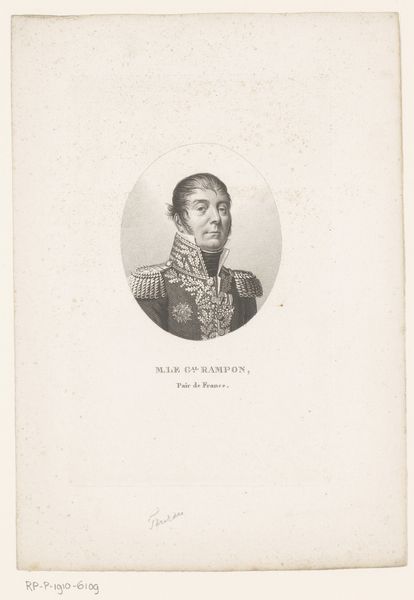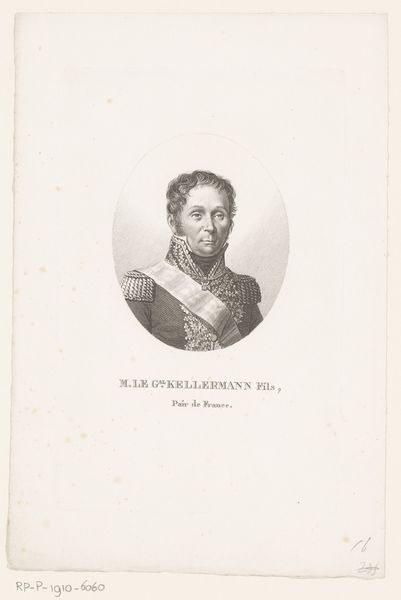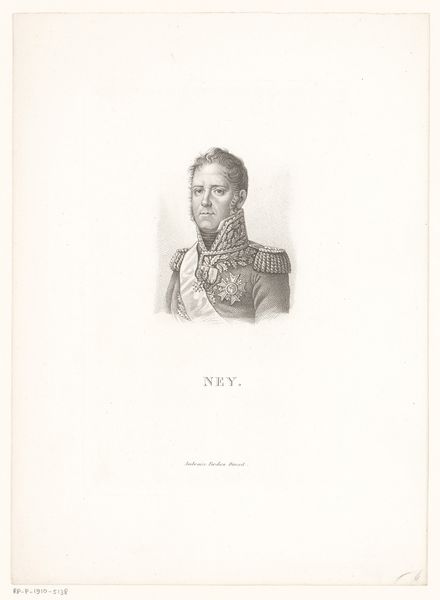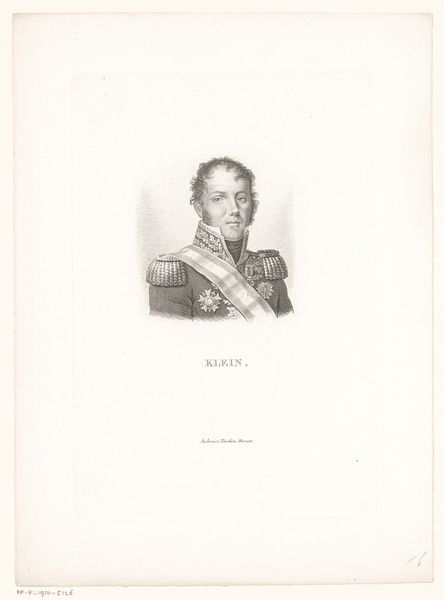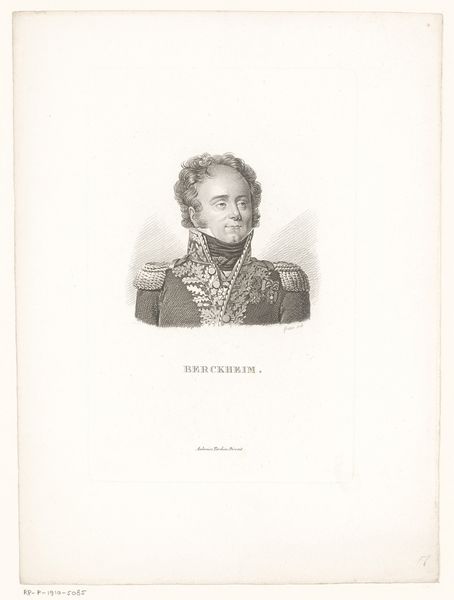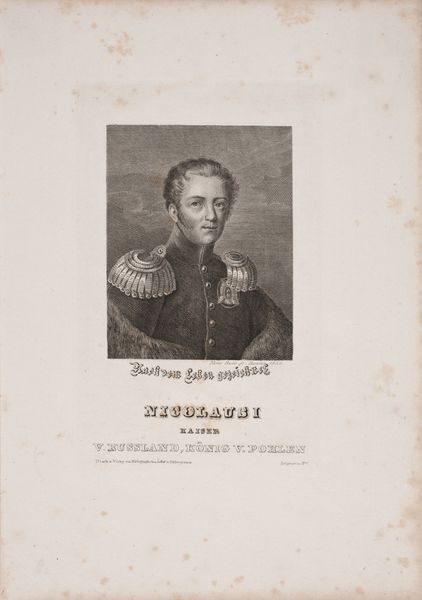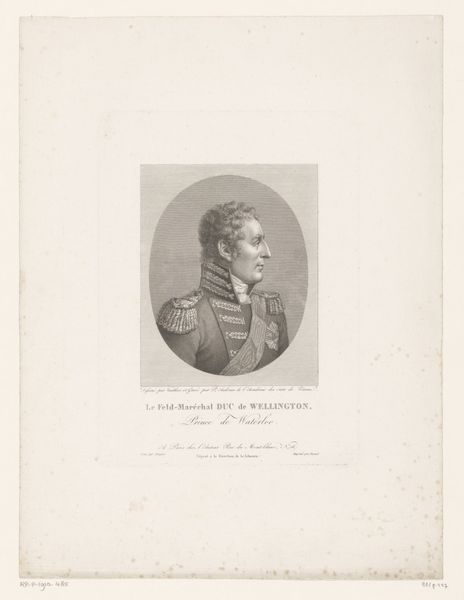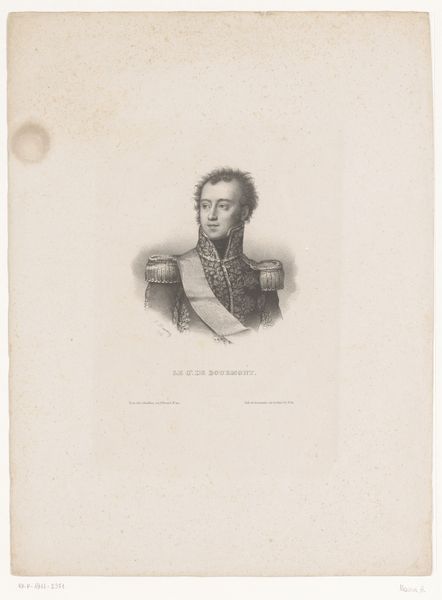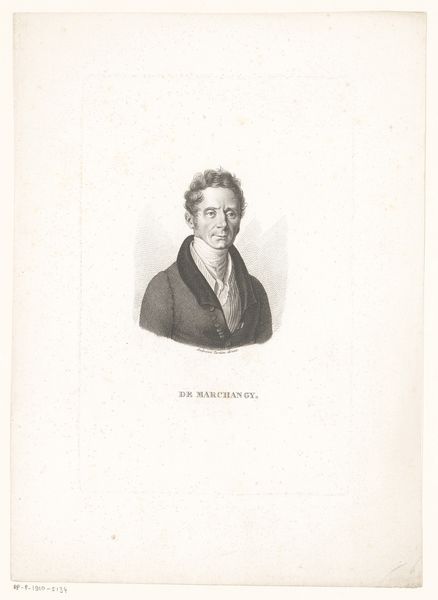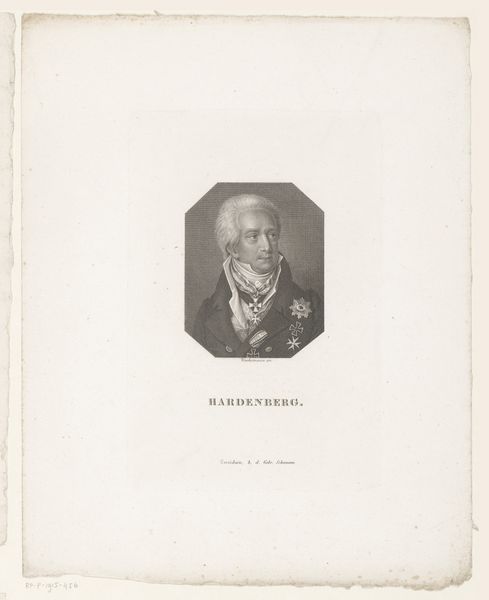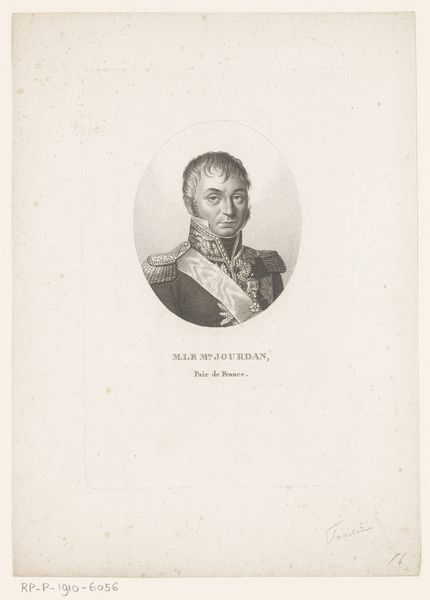
engraving
#
portrait
#
neoclacissism
#
old engraving style
#
form
#
line
#
history-painting
#
engraving
#
realism
#
historical font
Dimensions: height 215 mm, width 149 mm
Copyright: Rijks Museum: Open Domain
Charles Aimé Forestier produced this portrait of François Étienne de Kellermann, likely in France, sometime in the first half of the 19th century. Kellermann’s military attire denotes his elevated social position, yet his gaze is not overly assertive. The image invites us to consider the role of portraiture in post-revolutionary French society. France was experiencing dramatic shifts in power, and portraiture became a means of negotiating status and identity. We can ask: Does this portrait affirm traditional hierarchies, or does it suggest a new social order based on merit? Is Kellermann presented as an individual, or as a symbol of military authority? These questions take us into social and institutional histories. By consulting military records, personal letters, and exhibition reviews, we can learn how individuals like Kellermann navigated the changing landscape of French society and how artists like Forestier responded to these shifts. The meaning of art is contingent on its social and institutional context.
Comments
No comments
Be the first to comment and join the conversation on the ultimate creative platform.
